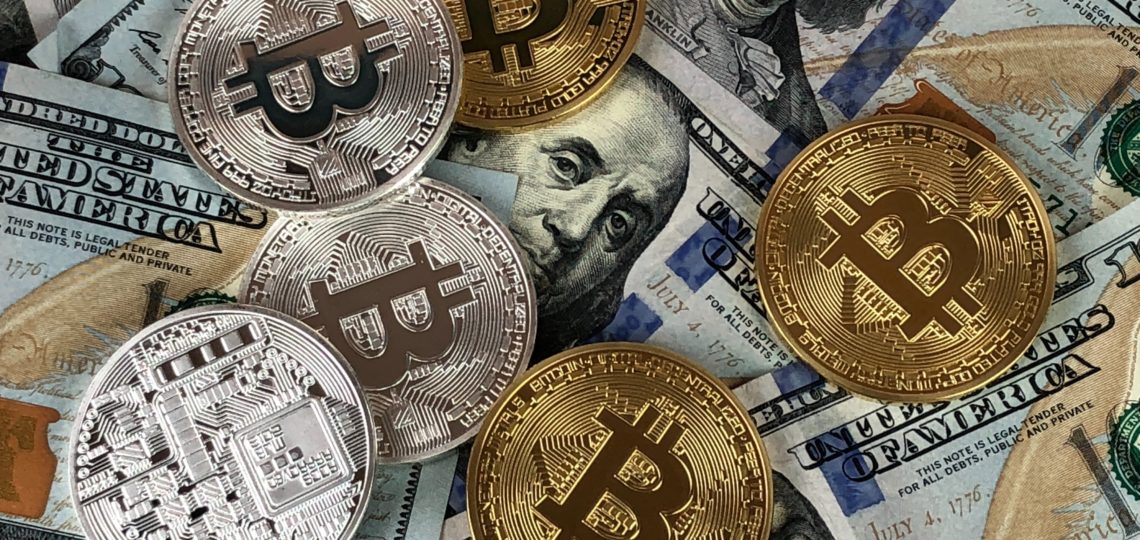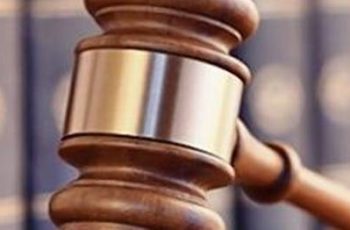The Role of RBI in Regulations of the Economy with Emphasis on RBI’s Policy on Crypto Currency
ABSTRACT
By the virtue of the Section 22[1]The Reserve Bank of India, Act 1934, Sec. 22, ACT NO. 2 OF 1934 of the RBI act of 1934 The Reserve bank of India, acts as the custodian of currency in India as it prints and regulates money in the Indian Economy, The RBI and the government of India cumulatively hold the authority to design, produce and manage the currency of the nation, to ensure an adequate supply of genuine notes. By regulating the currency, the central bank regulates the supply credit in market, in doing so the RBI maintains the stability in the Indian economy, by ensuring the market doesn’t tread on to a spiral of inflation or deflation. Crypto currency can be defined as a virtual or digital currency created and secured by the process of cryptography. In the recent times crypto currency has gained wide popularity around the world and including the Indian economic setup. A major question about challenging the legality of this non-legal tender is posed in front of the government, this paper focuses on the role of central banking system in the development of the new age economy entailing the crypto currencies.
INTRODUCTION
The history of the central bank in India dates back to the year of 1926. The Hilton-Young commission in 1926 recommended the creation of a central bank for India, in order to separate the other functions of government from the function of control of currency and credit following which under the RBI act of 1934 the central bank was established. The preamble of this act states that the objective of the bank is to regulate the supply of bank notes in the country while ensuring financial stability and to operate the credit and currency system in order to develop the economy. Thus, in today’s economic setup one of the most important function of the RBI is to formulate, regulate and implement the monetary policy with the aim of maintaining price stability and to ensure adequate supply to all the sectors of the economy, the central bank performs this function in a plethora of ways but primarily through controlling and regulating the supply of the legal tender, that is money.
MONEY SUPPLY
The term Money supply denotes the total volume of money in circulation in the economy at a particular point of time. The money-supply is regulated by the RBI to maintain price stability, and when there is liquidity in the market the demand increases. This leads to the situation where in the supply is overshadowed by the demand in every sector leading Inflation, which is increase in prices of the products; similarly when the liquidity is soaked up from the market, the demand decreases and is over shadowed by supply ultimately leading to deflation, when the prices decrease. Thus, the money supply is regulated by the central bank using three instruments:
1. Open Market Operation: This is the most crucial tool. The RBI purchases or sells short-term government bonds, securities, or treasury bills depending upon the requirement, if the bank wants to pump liquidity, then it buys the government bonds and vice-versa. Similarly commercial Banks invest in bonds issued by RBI. The money supply will be reduced off the RBI issues more bonds as the commercial banks will have less liquidity and in turn less money to lend and similarly when then central bank purchases these bonds back it pumps liquidity in the market.
2. Discount Rate: The second thing the Central Bank can do to influence the money supply is to regulate the interest rate charged from the commercial banks against credit. This rate is called the discount rate. Lowering the rate makes it easier for banks to borrow, which in turn it increases the money supply. In reverse, increasing the discount rate reduces the money supply.
3. The Required Reserve Ratio: CRR (Cash Reserve Ratio) or RRR refers to the ratio regulated by the RBI in relation to the cash deposits of the commercial banks. This denoted the ratio in which certain proportion of a commercial bank’s deposits are kept with the RBI in the form of cash the commercial banks are required to mandatorily hold a certain ratio in order to ensure the safety of the citizen’s wealth, further the banks are required to deposit such cash with the RBI. When the central bank has to soak up the liquidity from the market the bank increases the reserve ratio which leads to less availability of funds for the commercial banks to give credit, and vice-versa.
CRYPTO CURRENCY
Crypto currency is a digital currency secured by cryptography which is the process of allocating a set code to every individual currency denomination that acts a safe guard for the currency against counterfeiting or double-spending. Crypto currency is not issued by any central authority but maintained and regulated through a ledger system enforced through a diverse network of computers making it decentralized, as block chain technology. Previously this technology was used by the government and other corporate organizations for their internal dealings due to its traceability and transparency. based on the same model the first Crypto-currency called Bit coin was developed by an anonymous group of people and the features of block chain became its biggest selling points as they rendered the currency immune to any sort of interference or manipulation. Crypto currency has gained a large following in the recent times in the Indian economic setup, with multiple companies such as CoinDCX, CoinSwitch, WazirX, etc. coming forward with mass media promotion of the crypto currency of the way forward and providing an investment opportunity to the masses.
Today in India, almost 15 million investors hold more than 10,000 crores in crypto-currency as was recorded by a report of ‘The Internet and Mobile Association of India’. In the situation at hand with in flow of dozens of retail traders and individual investors the crypto currency has become a highly volatile substance with a lack of clear legislation and legal position. The ambiguity surrounding crypto currency has created a situation of instability in the Indian economic setup, with the public investing more and more of their funds in the highly volatile market. This might leads to a situation of extremely high liquidity or extremely low liquidity, which can ultimately cause the Indian markets to go in a chronic cycle of Inflation or deflation. Hence the current situation calls for the RBI and the government to formulate a monetary policy in regards to the crypto currency.
RBI’S STANCE ON CRYPTO-CURRENCY
The RBI issued a circular in 2018 that dictated that the commercial banks are not allowed to provide any kind of services to their customers pertaining to the crypto-currencies. However, this circular was struck down by the Apex court of law in the landmark judgment of “Internet and Mobile Association of India v. Reserve Bank of India .”
Following which there has been no clear position put forth by the RBI, until recently on the 31st of May 2021, wherein the RBI issued another circular [2]RBI/2021-22/45 DOR. AML.REC 18 /14.01.001/2021-22. Under which it has instructed the Commercial banks and other related entities that deal with crypto currency that they can carry out their services. However, these entities must fulfill the responsibility customer due diligence by complying with the processes that ensure the safety of the customers and set up an accountability mechanism against the wrong doers. The RBI prescribed that the customer due diligence process must be developed and regulated in line with standards enshrined under legislations such as “Foreign Exchange Management Act (FEMA).” and “Prevention of Money Laundering Act, (PMLA), 2002”. Further ensure that the dealings are done under the preview of “KYC”; “Anti-Money Laundering” and “Combating of Financing of Terrorism”.
GOVERNMENT’S STANCE ON CRYPTO CURRENCY
The inter-ministerial committee formed in order to research the possible issues, impacts and possibilities of regulation in regards to crypto currencies put forth and various risks associated with crypto currency in its 2019 report. The report mentioned that decentralized virtual currencies developed by private party poses issues such as value fluctuation due to its highly volatile nature, further due to a lack of regulation the technology bears issues that include phishing and Ponzi schemes. The committee strongly believed that such currency due to anonymous nature can be used for illegal and criminal uses such as funding terrorism and money laundering.
Thus, the committee suggested the introduction of an Indian digital currency called CBDC, whose value would be equivalent to that of one Indian Rupee, due to the various risks involved the government’s position, has been consistently leading towards developing a currency in India that will be issued and regulated by the concerned authorities.
CONCLUSION
The position of the government and RBI are highly ambiguous and seems to be difficult to be executed in the near future as RBI Act, 1934 provisions enshrined under Sections 22, 24, 25 and 26 [3]The Reserve Bank of India, Act 1934, Sec. 22,24,25& 26, ACT NO. 2 OF 1934 that enshrine the provisions regarding the RBI’s authority and responsibility to issue bank notes are ill-equipped in the current status quo to handle a situation of crypto currencies under the lens of CBDC specifications, regulation or issuance. Furthermore, The RBI’s department that is in charge of issuing bank notes, known as the Issue Department (Section 23) as specified under Section 33 of the Act[4]The Reserve Bank of India, Act 1934, Sec. 33, ACT NO. 2 OF 1934 can hold only certain types of assets, which doesn’t include crypto currency thus making it redundant and making it unclear how the Issues Department will come into play in minting the crypto currency issued by the Sovereign.
The Situation calls for the central bank to assume its role as the regulator of monetary policy and formulate a clear guideline in regards to the crypto-currency for the development of the economy and protection of the citizen’s best interest.

Arsh Dhammi
3rd Year, BBA., LL.B (Hons), Symbiosis Law School, Pune









 He holds a Bachelor’s and Master’s Degree in Corporate Secretaryship and a Degree in Law. He is a Fellow member of the Institute of Company Secretaries of India and an Associate Member of the Corporate Governance Institute, UK and Ireland. He has also completed a program from ISB on ‘Value Creation through Mergers and Acquisitions.
He holds a Bachelor’s and Master’s Degree in Corporate Secretaryship and a Degree in Law. He is a Fellow member of the Institute of Company Secretaries of India and an Associate Member of the Corporate Governance Institute, UK and Ireland. He has also completed a program from ISB on ‘Value Creation through Mergers and Acquisitions. Mr P Muthusamy is an Indian Revenue Service (IRS) officer with an outstanding career of 30+ years of experience and expertise in all niche areas of Indirect Taxes covering a wide spectrum including GST, Customs, GATT Valuation, Central Excise and Foreign Trade.
Mr P Muthusamy is an Indian Revenue Service (IRS) officer with an outstanding career of 30+ years of experience and expertise in all niche areas of Indirect Taxes covering a wide spectrum including GST, Customs, GATT Valuation, Central Excise and Foreign Trade. During his judicial role, he heard and decided a large number of cases, including some of the most sensitive, complicated, and high-stake matters on insolvency and bankruptcy, including many cases on resolution plans, shareholder disputes and Schemes of Amalgamation, De-mergers, restructuring etc.,
During his judicial role, he heard and decided a large number of cases, including some of the most sensitive, complicated, and high-stake matters on insolvency and bankruptcy, including many cases on resolution plans, shareholder disputes and Schemes of Amalgamation, De-mergers, restructuring etc., Ms. Sarah Abraham has been enrolled with the Bar Council of Tamil Nadu since 1998. Her areas of practice include Shareholder Disputes, Corporate Compliances, Mergers and Acquisitions, Private Equity/ Venture Capital Agreements and allied disputes, Information Technology Contracts, Intellectual Property, General Commercial Agreements, Litigation, Arbitration and Mediation.
Ms. Sarah Abraham has been enrolled with the Bar Council of Tamil Nadu since 1998. Her areas of practice include Shareholder Disputes, Corporate Compliances, Mergers and Acquisitions, Private Equity/ Venture Capital Agreements and allied disputes, Information Technology Contracts, Intellectual Property, General Commercial Agreements, Litigation, Arbitration and Mediation. A K Mylsamy is the Founder, Managing Partner and the anchor of the firm. He holds a Degree in law and a Degree in Literature. He is enrolled with the Bar Council of Tamil Nadu.
A K Mylsamy is the Founder, Managing Partner and the anchor of the firm. He holds a Degree in law and a Degree in Literature. He is enrolled with the Bar Council of Tamil Nadu. M Subathra holds a Degree in law and a Master’s Degree in International Business Law from the University of Manchester, United Kingdom. She is enrolled with the Bar Council of Tamil Nadu.
M Subathra holds a Degree in law and a Master’s Degree in International Business Law from the University of Manchester, United Kingdom. She is enrolled with the Bar Council of Tamil Nadu. Mr. K Rajendran is a former Indian Revenue Service (IRS) officer with a distinguished service of 35 years in the Indirect Taxation Department with rich experience and expertise in the fields of Customs, Central Excise, Service Tax and GST. He possesses Master’s Degree in English literature. Prior to joining the Department, he served for the All India Radio, Coimbatore for a period of about 4 years.
Mr. K Rajendran is a former Indian Revenue Service (IRS) officer with a distinguished service of 35 years in the Indirect Taxation Department with rich experience and expertise in the fields of Customs, Central Excise, Service Tax and GST. He possesses Master’s Degree in English literature. Prior to joining the Department, he served for the All India Radio, Coimbatore for a period of about 4 years. An MBA from the Indian Institute of Management, Calcutta, and an M.Sc. in Tourism Management from the Scottish Hotel School, UK, Ashok Anantram was one fo the earliest IIM graduates to enter the Indian hospitality industry. He joined India Tourism Development Corporation (ITDC) in 1970 and after a brief stint proceeded to the UK on a scholarship. On his return to India, he joined ITC Hotels Limited in 1975. Over the 30 years in this Organisation, he held senior leadership positions in Sales & Marketing and was its Vice President – Sales & Marketing. He was closely involved in decision making at the corporate level and saw the chain grow from a single hotel in 1975 to a very large multi-brand professional hospitality group.
An MBA from the Indian Institute of Management, Calcutta, and an M.Sc. in Tourism Management from the Scottish Hotel School, UK, Ashok Anantram was one fo the earliest IIM graduates to enter the Indian hospitality industry. He joined India Tourism Development Corporation (ITDC) in 1970 and after a brief stint proceeded to the UK on a scholarship. On his return to India, he joined ITC Hotels Limited in 1975. Over the 30 years in this Organisation, he held senior leadership positions in Sales & Marketing and was its Vice President – Sales & Marketing. He was closely involved in decision making at the corporate level and saw the chain grow from a single hotel in 1975 to a very large multi-brand professional hospitality group. Mani holds a Bachelor Degree in Science and P.G. Diploma in Journalism and Public Relations. He has a rich and varied experience of over 4 decades in Banking, Finance, Hospitality and freelance Journalism. He began his career with Andhra Bank and had the benefit of several training programs in Banking.
Mani holds a Bachelor Degree in Science and P.G. Diploma in Journalism and Public Relations. He has a rich and varied experience of over 4 decades in Banking, Finance, Hospitality and freelance Journalism. He began his career with Andhra Bank and had the benefit of several training programs in Banking. Mr. Kailash Chandra Kala joined the Department of Revenue, Ministry of Finance as ‘Customs Appraiser’ at Mumbai in the year 1993.
Mr. Kailash Chandra Kala joined the Department of Revenue, Ministry of Finance as ‘Customs Appraiser’ at Mumbai in the year 1993.
 S Ramanujam, is a Chartered Accountant with over 40 years of experience and specialization in areas of Corporate Tax, Mergers or Demergers, Restructuring and Acquisitions. He worked as the Executive Vice-President, Group Taxation of the UB Group, Bangalore.
S Ramanujam, is a Chartered Accountant with over 40 years of experience and specialization in areas of Corporate Tax, Mergers or Demergers, Restructuring and Acquisitions. He worked as the Executive Vice-President, Group Taxation of the UB Group, Bangalore. K K Balu holds a degree in B.A and B.L and is a Corporate Lawyer having over 50 years of Legal, Teaching and Judicial experience.
K K Balu holds a degree in B.A and B.L and is a Corporate Lawyer having over 50 years of Legal, Teaching and Judicial experience. Justice M. Jaichandren hails from an illustrious family of lawyers, academics and politicians. Justice Jaichandren majored in criminology and then qualified as a lawyer by securing a gold medal. He successfully practiced in the Madras High Court and appeared in several civil, criminal, consumer, labour, administrative and debt recovery tribunals. He held office as an Advocate for the Government (Writs Side) in Chennai and was on the panel of several government organizations as senior counsel. His true passion lay in practicing Constitutional laws with focus on writs in the Madras High Court. He was appointed Judge, High Court of Madras in December 2005 and retired in February 2017.
Justice M. Jaichandren hails from an illustrious family of lawyers, academics and politicians. Justice Jaichandren majored in criminology and then qualified as a lawyer by securing a gold medal. He successfully practiced in the Madras High Court and appeared in several civil, criminal, consumer, labour, administrative and debt recovery tribunals. He held office as an Advocate for the Government (Writs Side) in Chennai and was on the panel of several government organizations as senior counsel. His true passion lay in practicing Constitutional laws with focus on writs in the Madras High Court. He was appointed Judge, High Court of Madras in December 2005 and retired in February 2017. S Balasubramanian is a Commerce and Law Graduate. He is a member of the Delhi Bar Council, an associate Member of the Institute of Chartered Accountants of India, the Institute of Company Secretaries of India and Management Accountants of India.
S Balasubramanian is a Commerce and Law Graduate. He is a member of the Delhi Bar Council, an associate Member of the Institute of Chartered Accountants of India, the Institute of Company Secretaries of India and Management Accountants of India.